All it takes is 20 minutes. A super easy and full-flavored linguine pasta dish that’ll answer all your questions when it comes to taste. There’s nothing mild about this dish. It’s garlicky, spicy, and includes enough salt from the olives, capers, and anchovies that you won’t even need to add any more.
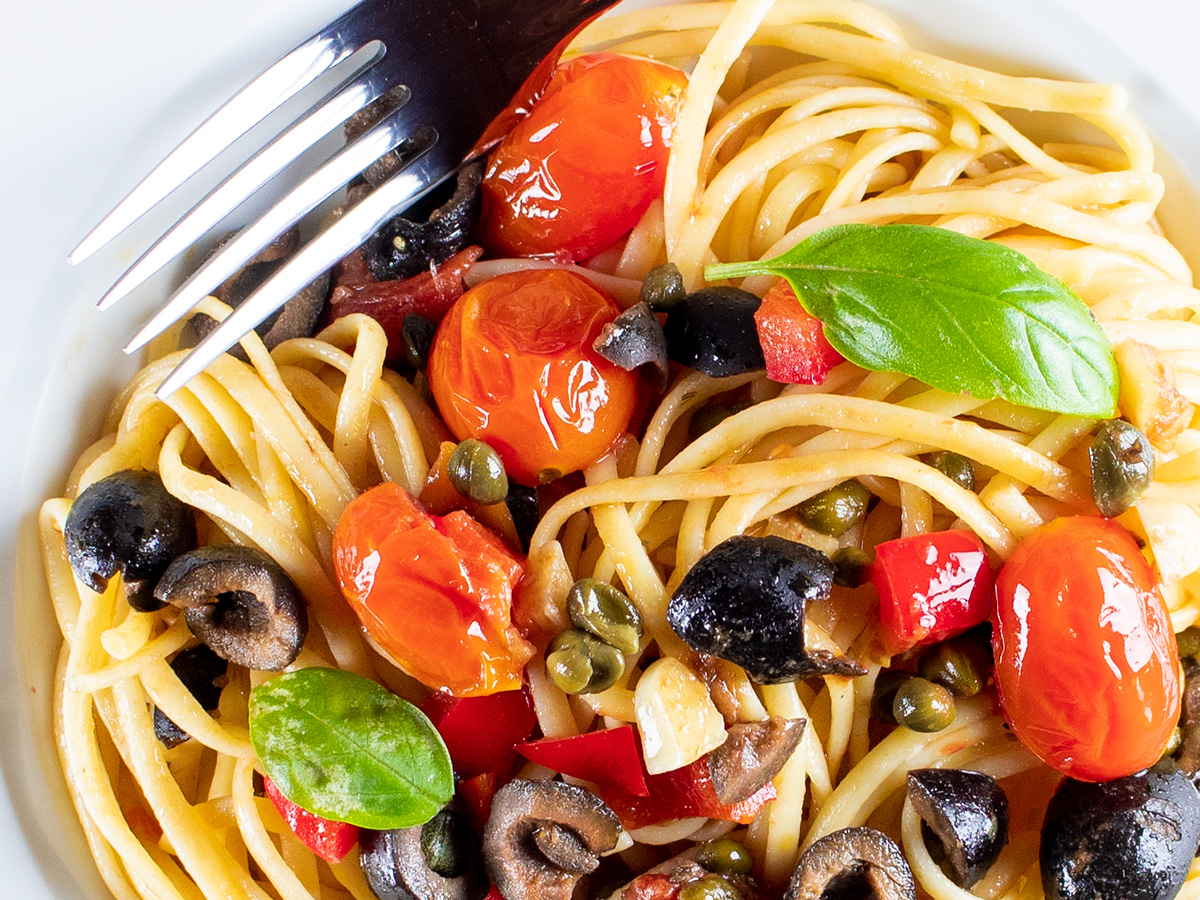
You’ll Love This Linguine Dish Because…
This is one of those dishes that’ll concern you. You’ll ask yourself, “Do I need to be near anyone tomorrow?” It’s because of the garlic. While it won’t be eaten raw, it’ll still give you pause. This is a full-throated garlic dish that’ll knock your socks off with flavor. Once you’re into eating it, you’ll be wondering why you haven’t been consuming more of it – along with capers, chilis, and anchovies. There are so many separate ingredients that taste incredible by their own right – but combined – combined, they make this robust dish perfect for an Italian inspired evening.
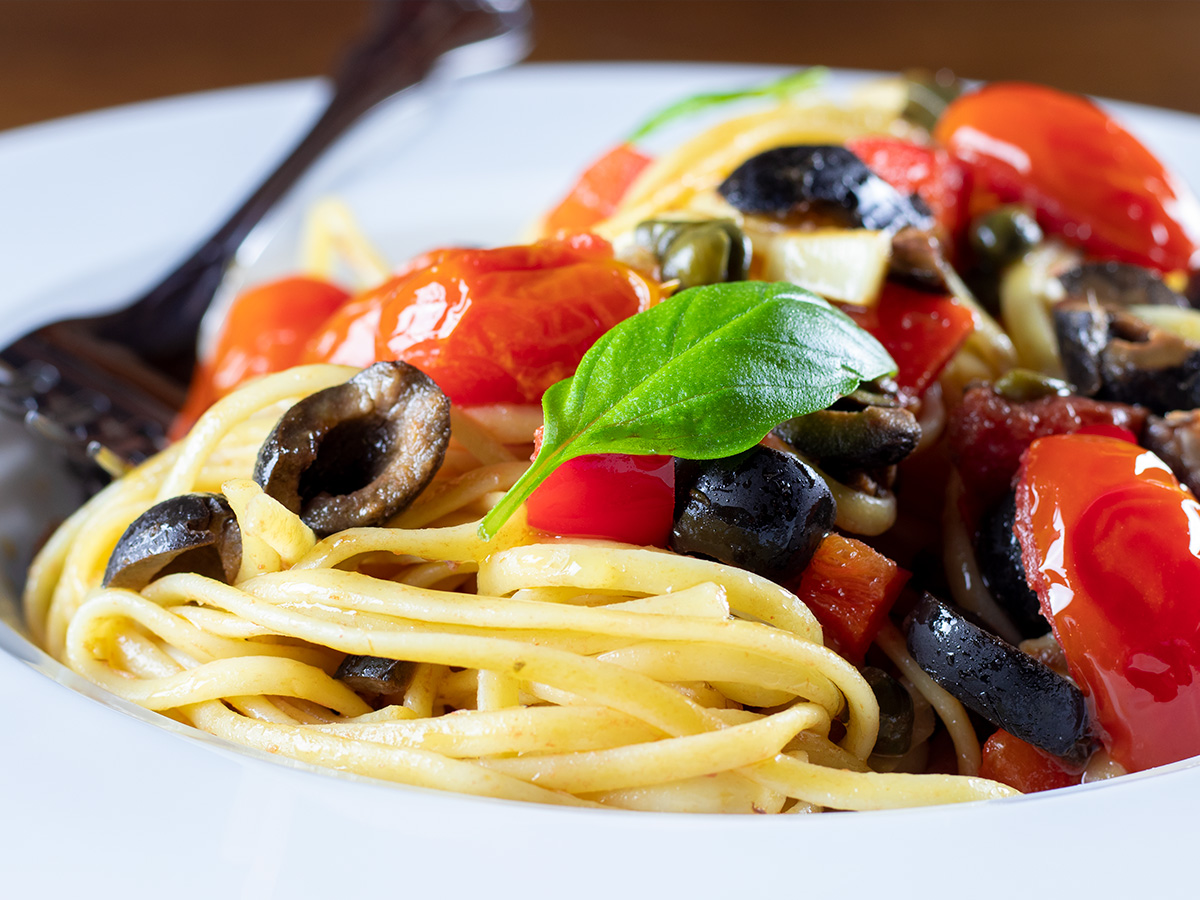
History of Linguine
I’m always entertained by the translations of some food names. In this case, the name linguini, or linguine, is derived from the Italian word lingua (tongue) and translates as little tongues. Spaghettis is perfectly round and fettuccine is flat. Linguine lies somewhere in the middle. It’s semi-flat, sort of like how a tongue is semi-flat. Where did the linguine pasta shape originate? In the Liguria region of Italy. That’s the area that surrounds Genoa and that borders southern France. It’s an area that enjoys a long coast line and that’s been widely acclaimed for its delicious cooking.
Ingredients
When I prepare a dish for this food blog, I like to photograph my prepped ingredients. I think that helps whomever might be reading the post. Please take a look at this dish’s ingredients below. Yours should look similar.
- Garlic – Get a nice fresh bulb that you can pull some cloves from. Nothing is better than fresh garlic. Then coarsely chop the cloves.
- Red Chili Peppers – If you like it hot, go with the red chilis. For a milder alternative, please look in the substitutions section below.
- Anchovies – These small fish add a lot of flavor to this dish. They’re an important component. Again, for substitutions, please look below.
- Black Olives – Buying canned black olives for this recipe is fine. For a much saltier, smokier, and more robust flavor though, go with the cured Italian or Moroccan version.
- Capers – I buy mine in a jar at the supermarket. It’s an excellent ingredient to add to an Italian dish like this.
- Cherry Tomatoes – Cherry or grape, as long as they’re small and firm, they’re good. They’ll melt later on, so it doesn’t matter which you use.
- Linguine – Fresh pasta is always better than dried, but dried is so much easier to find and it is much less expensive than fresh. Use what you can afford and locate.
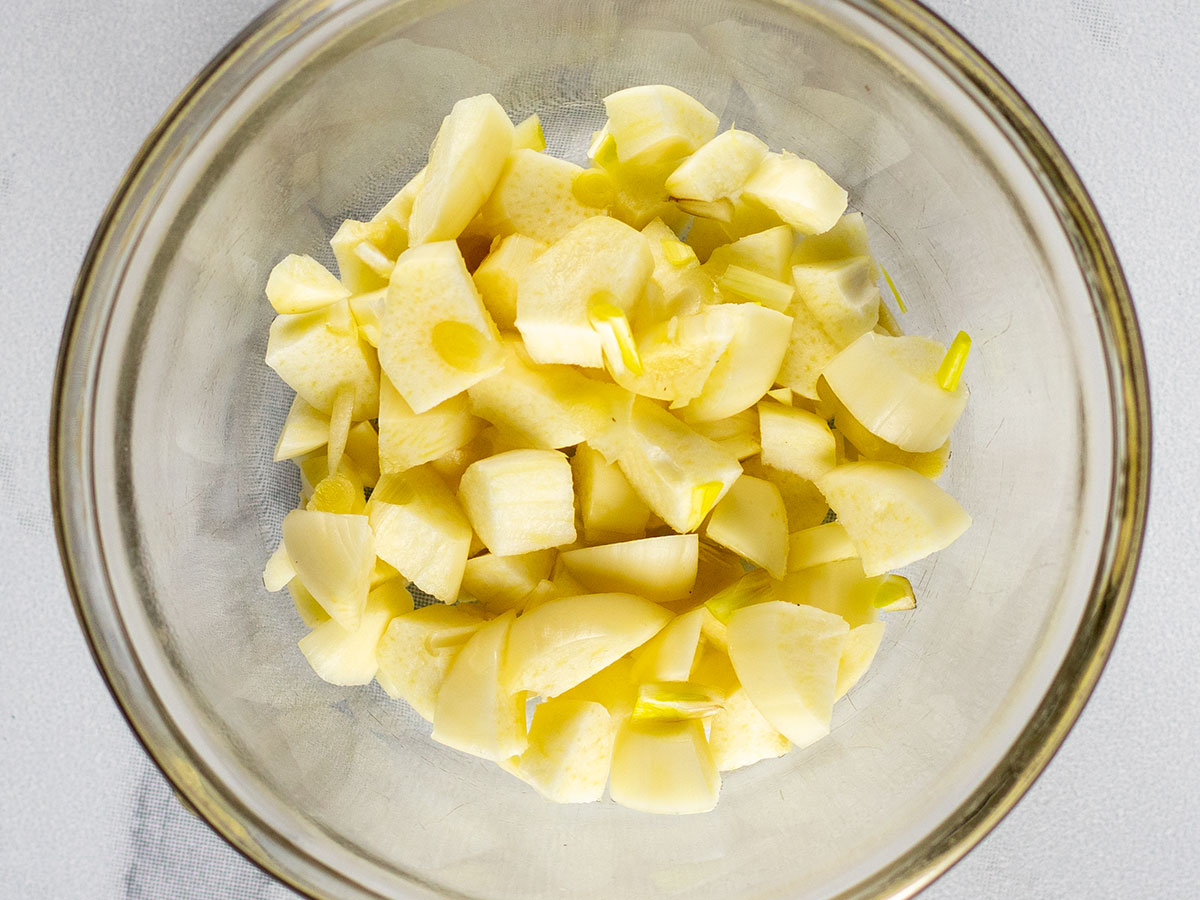

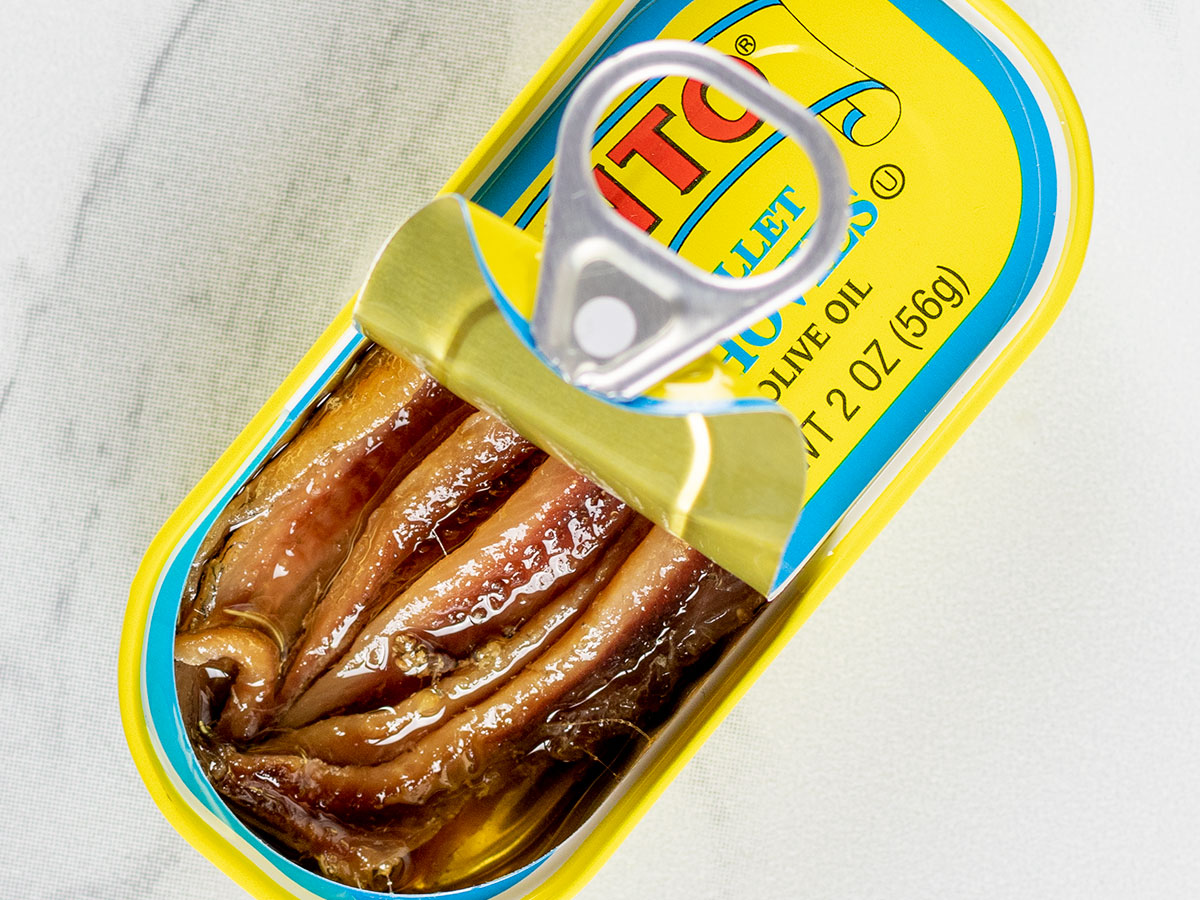
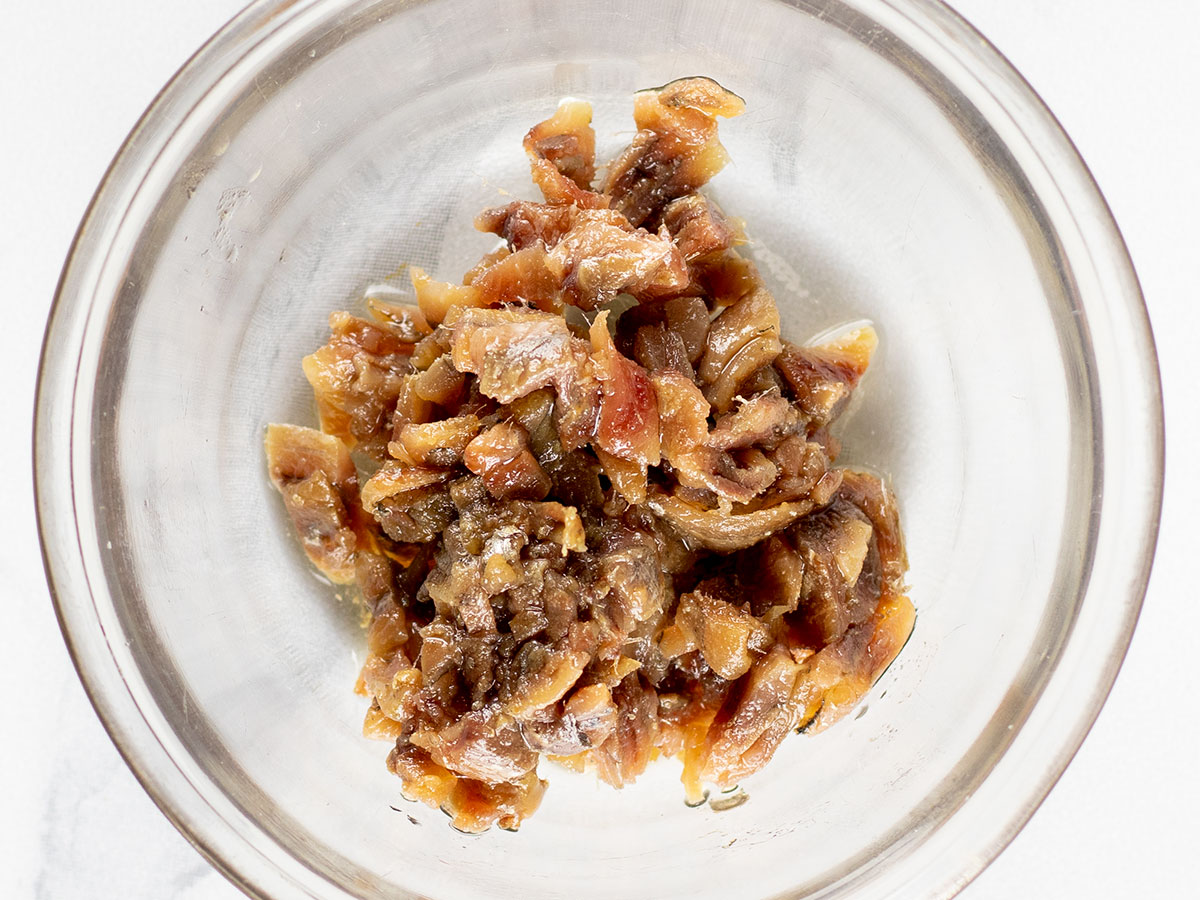
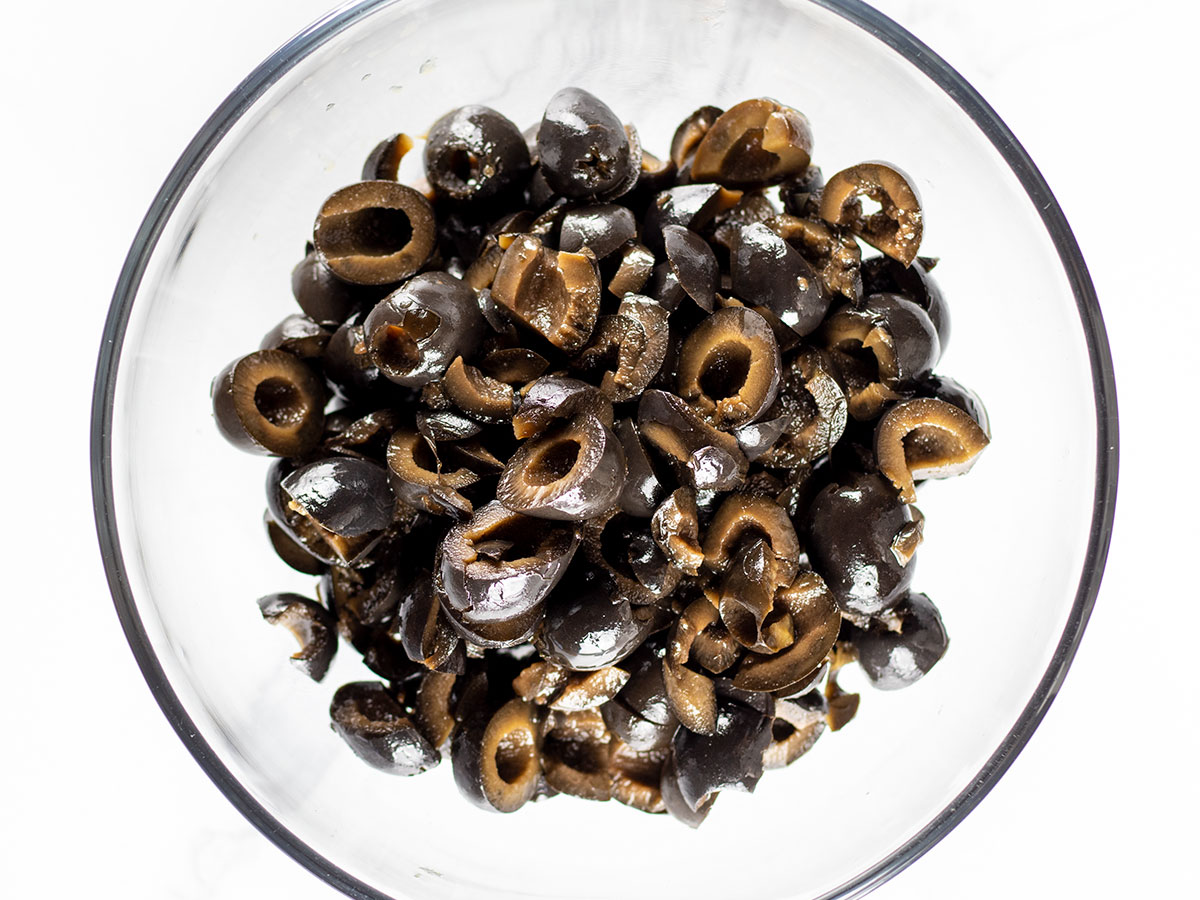
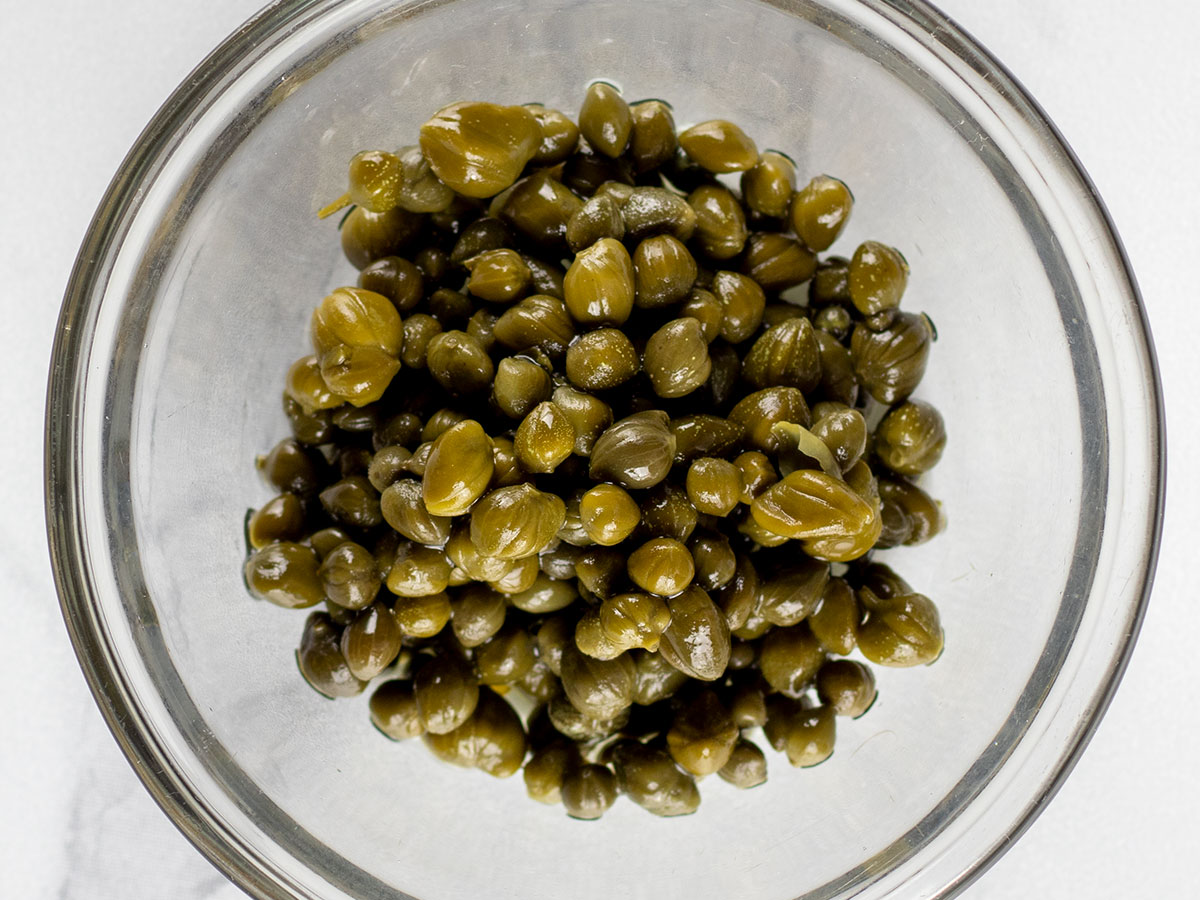
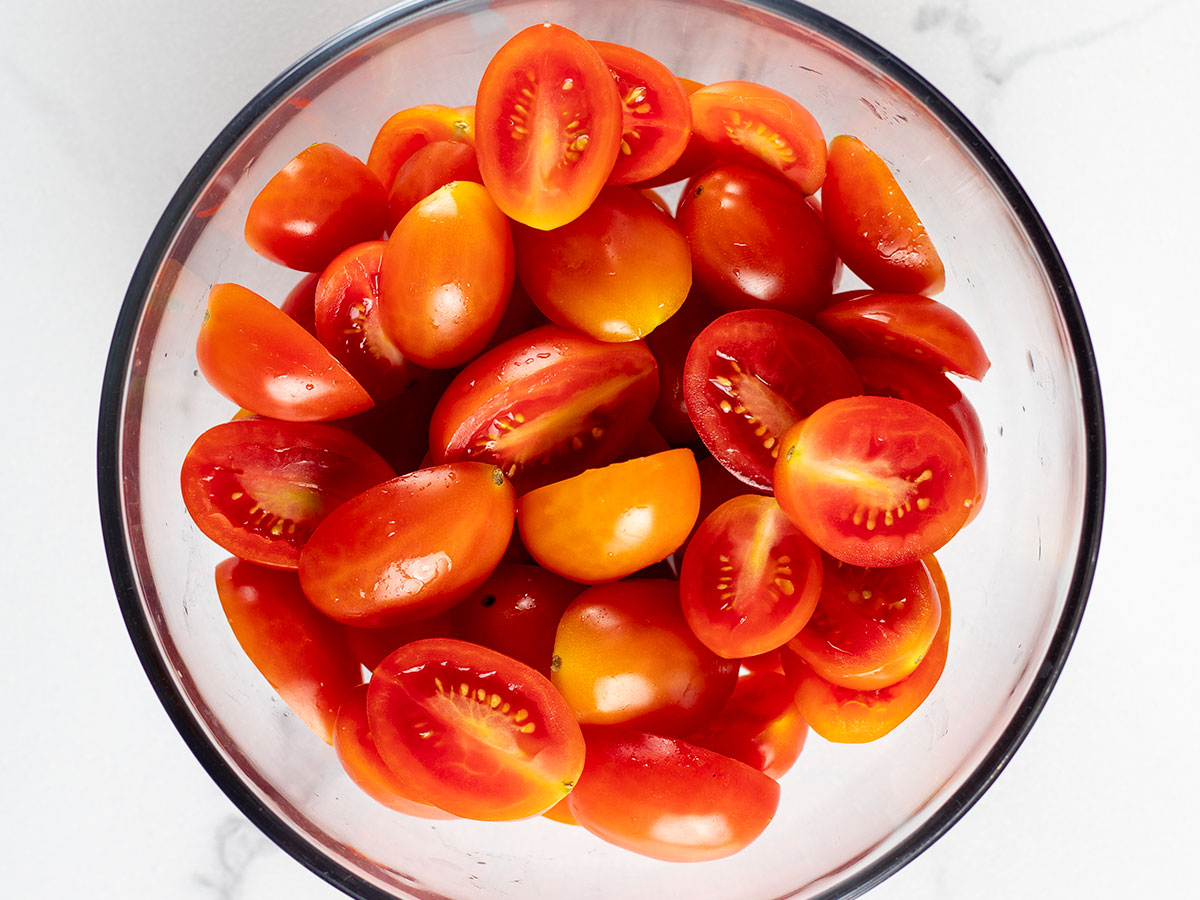

Pro Tip
When sautéing the garlic, pepper, anchovies, olives, capers, and tomatoes, do it with what folks refer to as love. There’s a perfect amount of olive oil and heat to be used. Find those amounts. Cook until the tomatoes have just begun to collapse upon themselves. To soften. Cook until the anchovies just begin to melt into the other ingredients. The goal is to form a sort of salty goodness that’ll carry the dish’s flavors home.
How to Cook the Perfect Linguine
It’s so easy to cook linguine. It’s much like cooking any other type of pasta (spaghetti, fettuccini, etc…). There are essentially four steps in the process:
- Use a large pot that’s filled at least half with water.
- Use more salt than you think is reasonable.
- Watch the clock.
- Taste, taste, taste.
And that’s about it. How do the Italians cook their pasta? They fill their pot with about four quarts of water and bring to a boil over high heat. For each quart of water, they add two teaspoons of salt. It’s important to add the salt to the water because the pasta itself can’t be seasoned any other way. While it’s cooking, the pasta absorbs the salt water and it ultimately tastes about a million times better than if the water wasn’t salted.
The question arises quite a bit, “Do I need to add olive oil to the boiling water?” My answer: don’t waste your time or money. The olive oil floats on top of the water and never comes in contact with the pasta. It doesn’t help it avoid sticking to itself. I’m not sure where this old tip initially came from, but the oil doesn’t do anything, except coat the drain pipe in your sink as you dump the pasta through a colander. To stop the pasta from sticking, use plenty of water in the pot and be sure to stir it well after the pasta is added to the pot. You’ll see the pasta loosen up as it cooks.
Al dente pasta takes about nine minutes to cook. Sometimes it can take slightly longer and sometimes, slightly shorter. That’s why you should begin tasting your pasta at about eight and a half minutes. When tasting, the pasta shouldn’t be hard at its core at all. You should be able to easily bite through without it sticking to your teeth. At just the point of it not sticking, that’s when it’s finished. Never overcook pasta until it’s too soft. That makes for a horrible evening.
Cooking Tools You’ll Need
Obviously, you’ll need a large pot in which to cook the pasta. My pot hold six quarts, so it’s plenty big. Six quart pots are widely available, so if you don’t already have one, it’ll be easy to get your hands on and you’ll use it for many more dishes. Also, a large skillet would be handy for this dish. You’ll be sautéing a bunch of ingredients, so the more room in the skillet, the better (see above and below photos of some of this equipment).
Those two things are the primary pieces of equipment. Beyond that, you’ll need a nice sharp knife with which to slice and dice your ingredients, a colander through which to strain your pasta, a wooden spoon with which to stir everything around, and a spaghetti serving spoon that’ll greatly help with serving.
How to Prepare Linguine with Tomatoes, Anchovies, & Chilis
To prepare this dish, please use the contents inside the recipe card below. These quick instructions are a mere overview. These instructions include photos, so that’s why I’m adding them here.
To start, cook the linguine in a large pot of boiling salted water. As it’s cooking, warm a large skillet over medium heat and add the olive oil, garlic, pepper, and anchovies to it. Cook for a few minutes until the garlic is soft. Then, add in the olives, capers, and tomatoes.
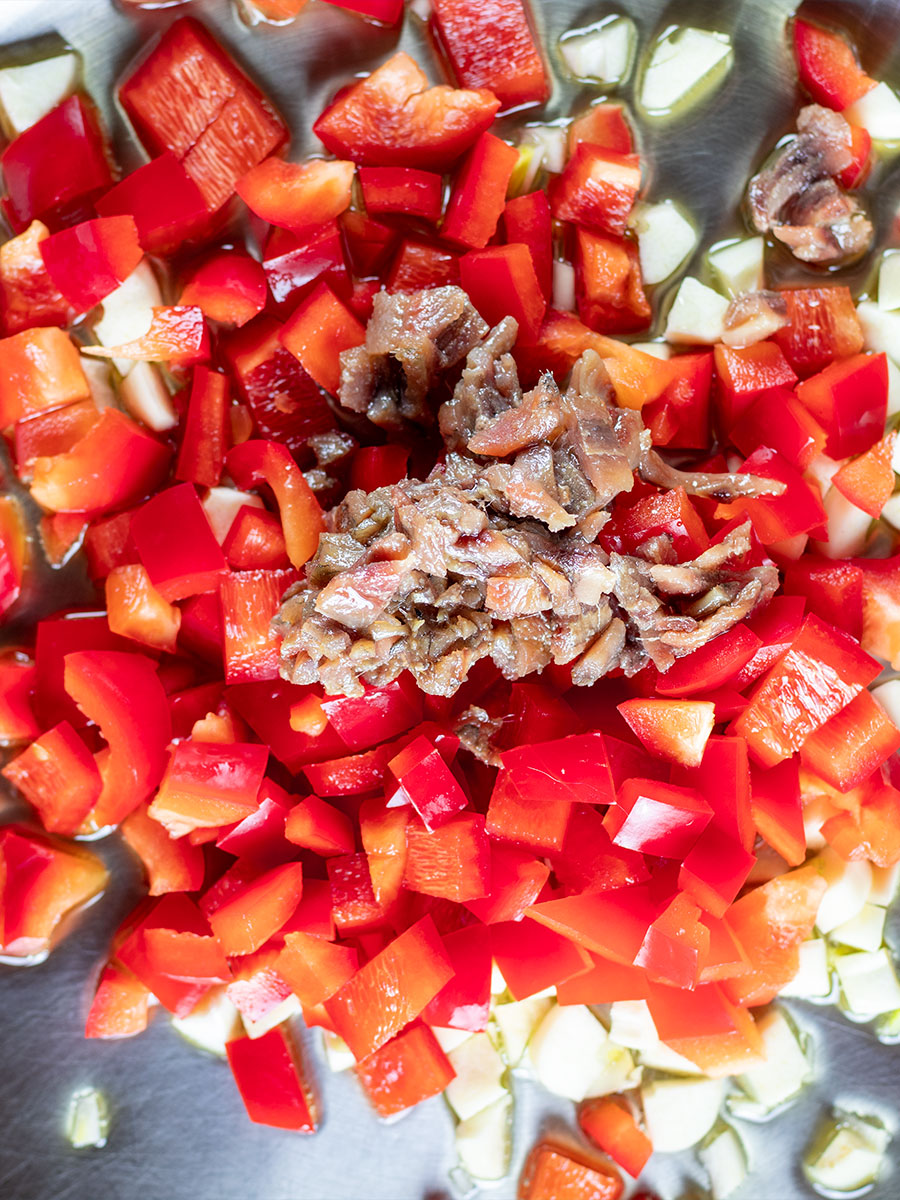
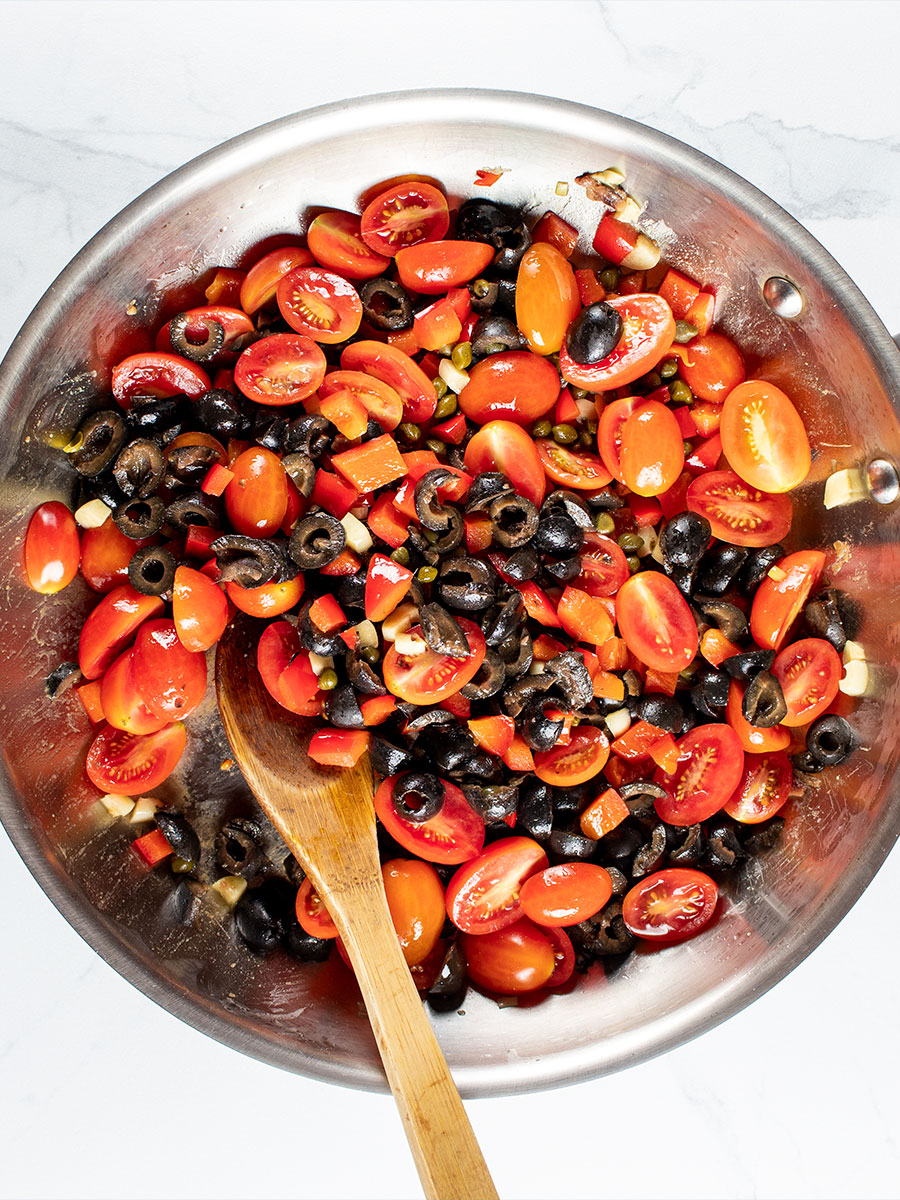
Cook for about five more minutes until the tomatoes become soft. When the pasta is finished, strain it through a colander and add it back to the pot whence it came. After the skillet ingredients are finished, add them to the pot with the spaghetti in it. Mix everything together, season if needed, and serve, garnished with basil leaves.
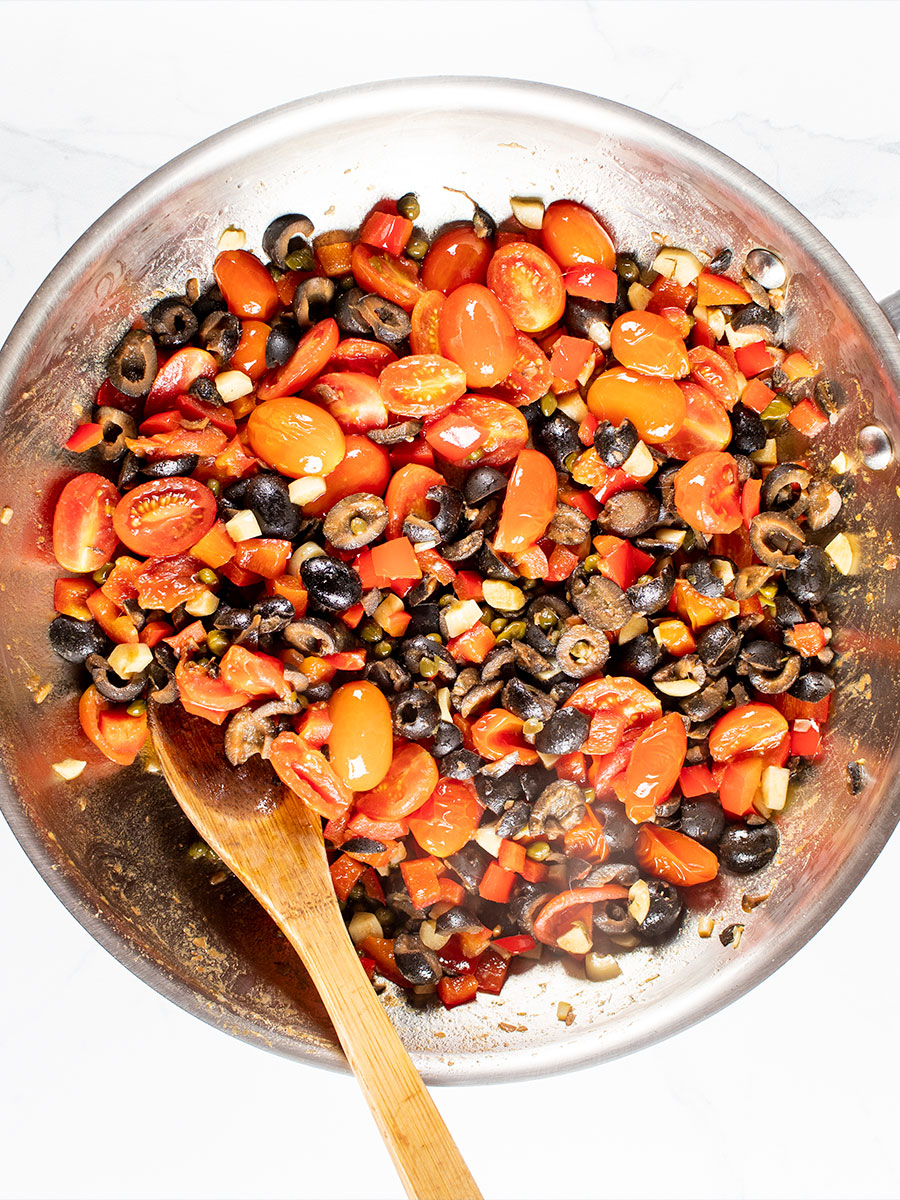
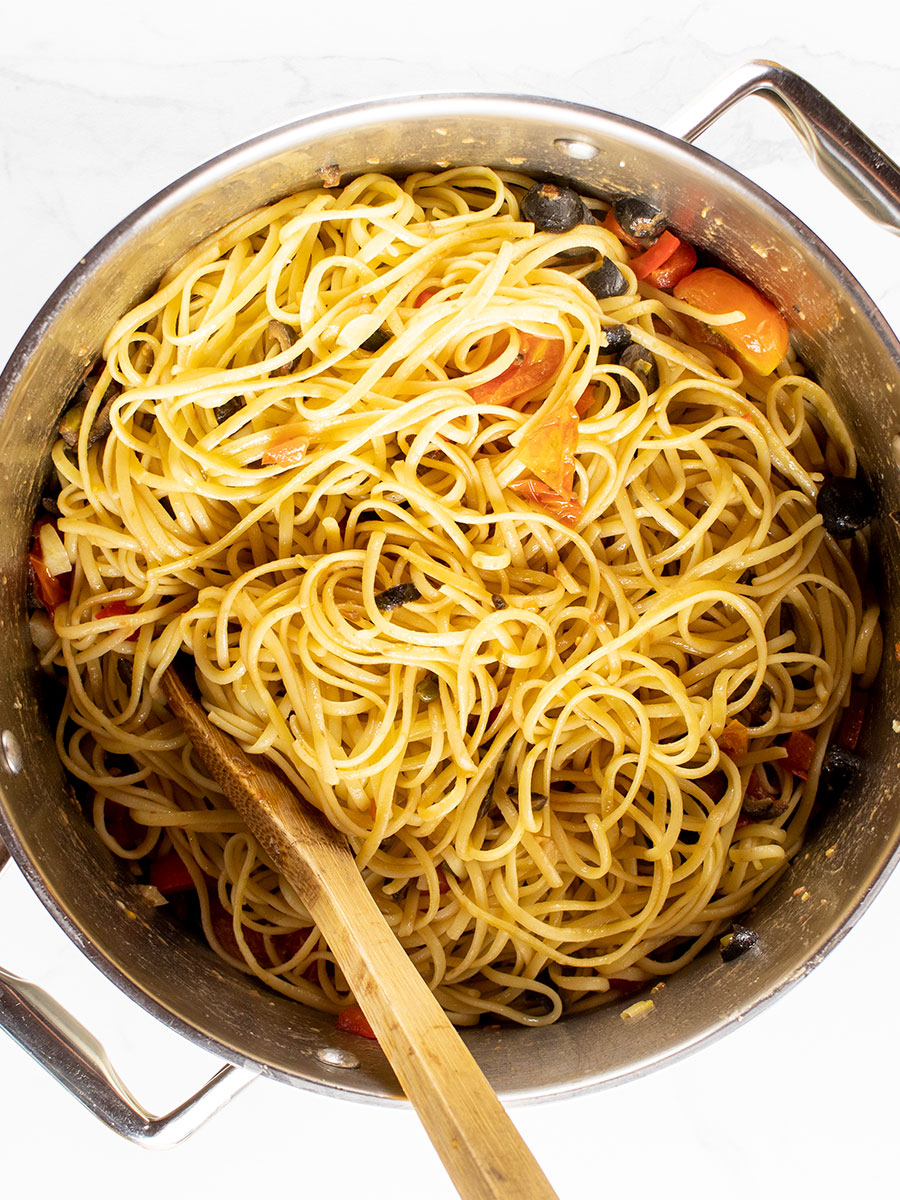
Substitutes for Chilis & Anchovies
There are a few substitutions I thought I’d bring up.
What to Substitute Red Chilis With
Not everyone likes spicy food, so it’s important to offer a substitute for the chilis in this dish. It would be such a shame not to try this recipe just because it includes the chilis. If you’re like me and don’t like too much spice, simply swap out the chili and toss in a red bell pepper instead. As you may have noticed in the photos for this post, that’s exactly what I did.
What to Substitute Anchovies With
As for the anchovies, if you don’t like them or for some reason can’t find them, you can easily substitute them with either sprats or sardines. Be sure to taste each of these small fish though before you go full steam ahead and add them to this dish. Sardines and sprats are milder than anchovies, so it’s generally safe to substitute anchovies with them. However, the other way around might be too much flavor for some. But just know that these fish are in the same family – they’re small, oily fish that are perfect for dishes like this.
Side Dishes That Complement Linguine
The options are endless when it comes to what you can eat with a linguine dish such as this. Just for ideas, I thought I’d throw some ideas out there. This is obviously in no way an exhaustive list. If you’ve got more ideas, please share in the comment section below.
- Kale Caesar Salad
- Cheesy Garlic Bread
- Lemon Parmesan Asparagus
- Tomato Bruschetta with Balsamic Glaze
- Tomato and Mozzarella Caprese Salad
- Garlic Breadsticks
And the list goes on. If you’re interested in excellent side dishes for pasta, simply search that phrase on Google. The results are astounding.
Wine Pairings
Because much of the sauce used in this dish features tomatoes, I thought I’d pair that sauce with a wine that complements it. In the wine world, this dish would be considered a tomato-based pasta. Included in the list below are the appropriate wine pairings.
- Primitivo (aka Zinfandel)
- Montepulciano d’Abruzzo
- Sangiovese (Chianti, etc)
- Cannonau (Grenache)
- Negroamaro
- Nero d’Avola
- Rhône Blends
Essentially, the above are all medium-bodied red wines.
Can you Store Leftover Pasta?
Storing leftover pasta is easy. The first step is to let it cool, if it’s still hot. If you’ve got a pasta dish that doesn’t have the sauce mixed in with the pasta already, keep the leftovers separate. Place the pasta in one airtight container and the sauce in another. Since the pasta and sauce were already combined in this dish, it’s fine to place everything together in one airtight container. After that, you can refrigerate it for up to five days. To reheat, place the contents of the container in a saucepan over medium heat for a few minutes, stirring regularly. Add a bit more olive oil if necessary.
Linguine Recipe with Tomatoes, Chilis, & Anchovies
Equipment
- 1 Large Pot
- 1 Large Skillet
- 1 Chef's Knife
- 1 Colander
- 1 Wooden Spoon
- 1 Spaghetti Serving Spoon
Ingredients
- 1 Pound Linguine Dry
- 3+ Tablespoons Olive Oil Extra Virgin
- 5 Garlic Cloves Peeled & Chopped
- 1 Red Chili (Substitute with Red Bell Pepper) Chopped
- 2 Ounce Can of Anchovies Drained & Chopped
- 8 Ounce Can of Black Olives Pitted & Chopped
- 3 Tablespoons Capers
- 8 Ounces Cherry or Grape Tomatoes Halved
- 1+ Tablespoon Salt
- 1/2 Teaspoon Black Pepper Ground
- 10 Fresh Basil Leaves for Garnish
Instructions
- Add 1 tablespoon salt to pot of boiling water.
- Add pasta to water and cook until al dente (about 9-10 minutes).
- When pasta is finished, strain through colander and add back to pot. Drizzle some olive oil over pasta and stir so the pasta doesn't stick to itself.
- While pasta is cooking, warm skillet over medium heat and add 3 tablespoons olive oil, garlic, chili/pepper, and anchovies.
- Sauté above for a few minutes until ingredients begin to soften (about 3-4 minutes).
- Add olives, capers, and tomatoes to the skillet and sauté ingredients in skillet for about 5 more minutes. Stir occasionally.
- When finished, add contents of skillet to the pot that contains the pasta. Add the ground pepper and mix everything together. Season to taste.
- Plate and serve. Garnish with fresh basil leaves.
Notes
- This is a very versatile pasta dish. If you don’t have any linguine on hand, use spaghetti, penne, ziti, or whatever you do have.
- The idea behind this dish is that you enjoy an olive oil based sauce that’s chock full of salty condiments as well as fresh vegetables. Feel free to improvise and swap ingredients around. Salty and fresh – that’s the key.
If you tried this recipe and enjoyed it, please leave a positive rating as well as a comment down below. Let me know your thoughts and your ideas for making it even better. Thanks!


Hi – What a wonderful looking dish. I’m totally going to try this sometime this week! Thank you! Kim
Go for it, Kim. You’ll love it.
I own 3 of Gordon’s cookbooks. I like his recipes because they are all so simple. I’ll try this one too.
Hi Michele,
I only have the one so far (Home Cooking). I prepared Gordon’s famous broccoli soup years ago and became hooked on his simplicity. This dish seems to be nearly as simple. Enjoy!
Jay
This linguine recipe looks amazing! Thanks for sharing!